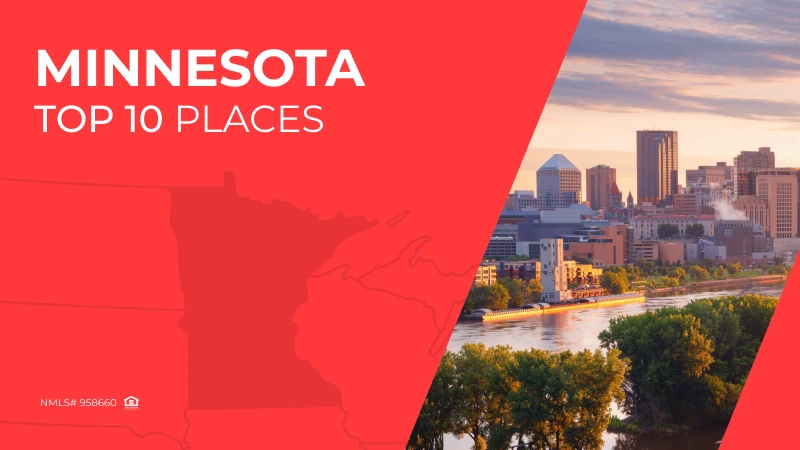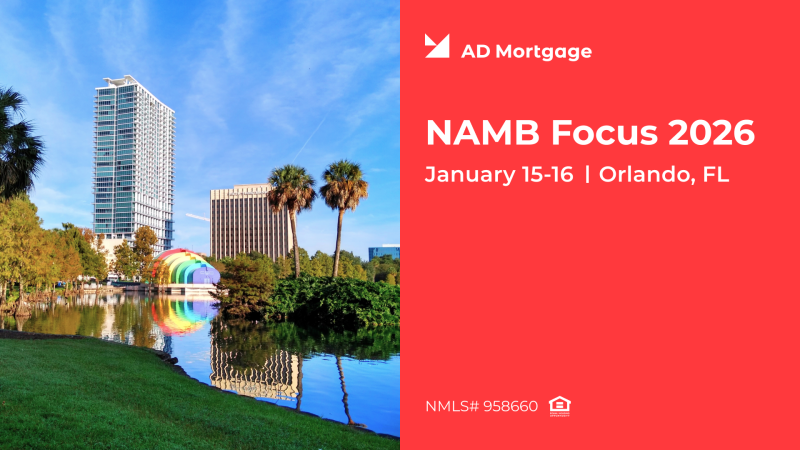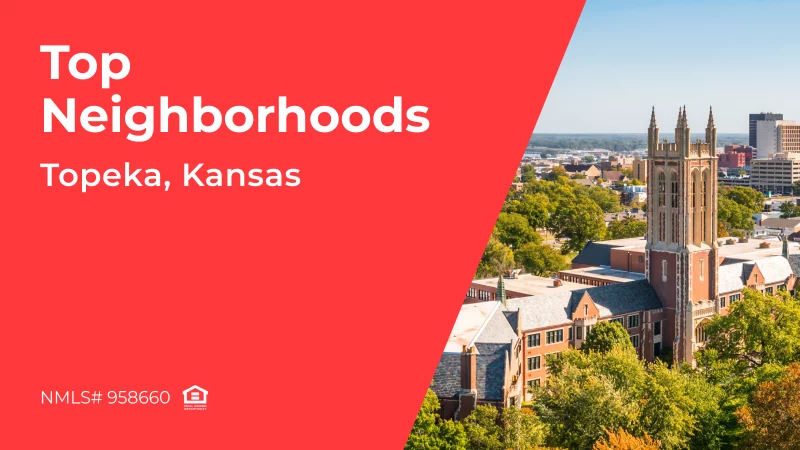When it comes to affordable living with a high quality of life, Minnesota stands out as an exceptional option. Known for its scenic landscapes, welcoming communities, and balanced lifestyles, Minnesota offers several cities that provide not only affordable housing but also access to excellent amenities, community engagement, and ample recreational opportunities. With diverse job markets, solid healthcare infrastructure, and strong school systems, these cities make it easy to find a place that fits both financial and lifestyle goals. In this article, we’ll explore the top 10 most affordable places to live in Minnesota, each with its own unique charm and community strengths.
From the lakeside views of Albert Lea to the historic appeal of Hibbing, these cities demonstrate that affordable living doesn’t mean compromising on quality. Alongside profiles of each city, we’ll examine the factors contributing to their affordability, as well as essential aspects like education, healthcare, and recreation that make these places desirable. Whether you’re a first-time homebuyer, a young family, or a retiree looking for a welcoming place to settle down, Minnesota’s affordable cities offer plenty to love and make homeownership within reach
Top 10 Most Affordable Places to Live in Minnesota
1. Owatonna

Located in Steele County, Owatonna is known for its picturesque parks, historic sites, and strong sense of community. This city combines affordability with an array of amenities, making it a favorite for families and retirees alike. Median home prices here are among the lowest in the state, allowing residents to enjoy spacious single-family homes within close-knit neighborhoods. Owatonna’s economy is bolstered by several major employers, including healthcare providers and retail giants, which keep the job market stable. The city is also home to attractions like Kaplan’s Woods Parkway, a 225-acre park with trails and scenic spots, providing residents with an abundance of outdoor activities.
2. Brainerd
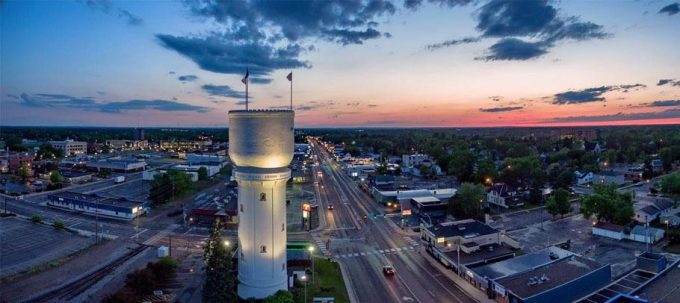
Nestled in the heart of Minnesota’s “Lakes Country,” Brainerd offers affordable housing with proximity to stunning natural landscapes. Known for its numerous lakes and recreational options, Brainerd is a paradise for those who enjoy water sports, fishing, and hiking. The city’s median home price is below the state average, making it an ideal place for first-time homebuyers. Brainerd is also recognized for its vibrant downtown area, with local boutiques, cafes, and community events that add to its small-town charm. Brainerd’s tourism industry provides ample job opportunities, and the city benefits from a steady influx of visitors, which helps support local businesses.
3. Hibbing

Hibbing, located on the Iron Range, is steeped in mining history and offers some of the most affordable housing in Minnesota. With roots dating back to the iron mining boom, Hibbing has evolved into a city known for its cultural landmarks and strong sense of heritage. Hibbing High School is a historic centerpiece of the town, showcasing its architectural grandeur and community pride. The city has several parks, theaters, and annual festivals, making it a lively place to live. Hibbing’s economy is supported by the mining industry and healthcare facilities, providing residents with stable job opportunities and affordable living costs.
4. Marshall

Marshall, located in southwestern Minnesota, is a city with a strong agricultural foundation and a diverse economy. Housing here is affordable, and residents benefit from a variety of employment opportunities, including positions in education, healthcare, and agribusiness. Marshall is home to Southwest Minnesota State University, which adds a youthful vibrancy to the city. This college town atmosphere also brings cultural events and sports, enhancing the local lifestyle. Marshall’s central location means residents have access to both urban amenities and rural tranquility, offering a balanced quality of life.
5. Wadena
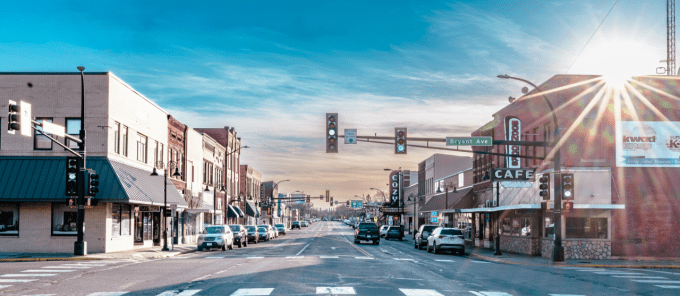
Wadena is a small town with a welcoming, tight-knit community atmosphere. This city combines a low median home price with family-friendly amenities, making it an attractive option for those seeking a quieter lifestyle. Wadena is known for its parks and trails, as well as its active local organizations that host events throughout the year. The Wadena Community Center is a popular spot for gatherings, classes, and recreational activities, supporting the city’s reputation for fostering community connections. Local schools are well-regarded, and Wadena’s healthcare facilities meet the needs of its residents, contributing to the town’s appeal as a peaceful and affordable place to live.
6. Albert Lea

Located near the Iowa border, Albert Lea is known for its scenic lakes, including Fountain Lake and Albert Lea Lake, which offer a range of outdoor activities. The city has an affordable housing market, making it ideal for families and retirees looking for budget-friendly living near water. Albert Lea’s downtown area is bustling with shops, restaurants, and cultural attractions, which add to its lively atmosphere. The city’s economy is diverse, with job opportunities in manufacturing, healthcare, and retail. Albert Lea’s dedication to preserving its natural beauty is evident in its numerous parks and trails, fostering an outdoor-centric lifestyle for residents.
7. Grand Rapids

Surrounded by forests and lakes, Grand Rapids is a city that embraces both affordability and natural beauty. This community is popular among nature enthusiasts, with access to numerous parks, including the 200-acre Forest History Center and the nearby Chippewa National Forest. Grand Rapids also has a rich arts scene, with venues like the Reif Center hosting performances and events. The city’s economy is supported by tourism, healthcare, and manufacturing, offering stable employment options. Affordable housing and a strong commitment to preserving local history make Grand Rapids a desirable location for those looking to enjoy Minnesota’s scenic charm.
8. Faribault

Located about an hour south of the Twin Cities, Faribault offers affordable living with easy access to the amenities of a larger metropolitan area. The city has a rich history, with landmarks like the Faribault Woolen Mill and the historic downtown district. Faribault’s housing market is accessible, attracting families and young professionals seeking a community-oriented lifestyle. Residents enjoy the River Bend Nature Center, a sprawling natural area with trails and wildlife, as well as a variety of community events. The local economy is supported by manufacturing, education, and healthcare, creating a balanced and thriving community.
9. Willmar

Willmar, in west-central Minnesota, is a culturally diverse city with a booming local economy and affordable housing options. The city’s employment opportunities span healthcare, agriculture, and retail, creating a stable economic base. Willmar’s numerous parks, golf courses, and trails make it ideal for those who enjoy outdoor recreation. The city is also known for its commitment to community engagement, with multicultural events and programs that bring residents together. Affordable real estate, combined with cultural vibrancy, makes Willmar a welcoming and attractive choice for families and professionals alike.
10. Cloquet

Cloquet is a small city known for its proximity to Duluth and access to Minnesota’s North Shore. It offers affordable living in a charming, nature-filled setting. Cloquet is surrounded by forests, rivers, and lakes, making it a paradise for those who love outdoor activities like hiking, fishing, and camping. The city’s historic landmarks, such as the Frank Lloyd Wright-designed gas station, add to its unique character. Cloquet has a strong local economy supported by healthcare, education, and manufacturing. Residents enjoy a mix of small-town charm and the conveniences of a larger city nearby, making it an ideal place for affordable and balanced living.
Factors That Contribute to Affordability
Several key factors contribute to the affordability of cities in Minnesota, creating appealing opportunities for homebuyers and renters seeking budget-friendly options without sacrificing a comfortable lifestyle. Here’s a closer look at the elements that make these cities financially accessible:
Get the ADvantage
with our loyalty program
Earn and redeem points for valuable benefits for you and your clients
Unlock Rewards
1. Lower Cost of Living
The cost of living in Minnesota’s smaller cities is significantly lower than in major metropolitan areas like Minneapolis and St. Paul. Everything from groceries and transportation to utilities and healthcare tends to cost less in these areas. This means that everyday expenses are more manageable, allowing residents to enjoy a higher standard of living on a modest income. For families, singles, and retirees alike, lower daily costs make these cities an attractive choice.
2. Affordable Housing Market
Real estate in these cities is typically more affordable than in urban centers, thanks to a combination of lower demand, available land, and efficient local government planning. In most of the highlighted cities, home prices remain well below the national and state averages, providing a broad range of options from single-family homes to townhouses and condos. The affordable housing market allows potential homeowners to enter the property market sooner and invest in homes that meet their needs without stretching their finances thin.
3. Stable Employment Opportunities
Most affordable places to live in Minnesota often have diverse job markets with steady employment opportunities in healthcare, education, manufacturing, agriculture, and retail. These industries play a crucial role in supporting the local economy and keeping housing demand steady without driving prices up. Many cities also benefit from being close to larger economic hubs, providing residents with job access without the associated higher living costs, allowing them to commute as needed.
4. Lower Property Taxes and Fees
Most affordable places to live in Minnesota tend to have more manageable property taxes and local government fees compared to bigger cities. These taxes are crucial in determining housing affordability, as they can impact monthly mortgage payments and long-term housing costs. Many municipalities in these cities prioritize keeping taxes low to attract new residents and businesses, making the cost of homeownership more feasible for a wider range of people.
5. Land Availability and Development Potential
These cities benefit from abundant land for development, reducing pressure on the housing market. Because there is less competition for space, developers can build homes at lower costs, allowing housing prices to remain affordable. Additionally, with fewer zoning restrictions in some cities, developers can explore various housing types, including multi-family housing and affordable single-family homes, which helps keep prices competitive.
6. Economic Incentives and Community Investment
Many Minnesota cities offer economic incentives, such as tax breaks and subsidies, to encourage businesses and residents to settle in the area. These incentives often stimulate job growth and local economic development, keeping the cost of living manageable and providing opportunities for financial growth. Additionally, local governments are increasingly investing in community improvement projects, such as revitalizing downtown areas, enhancing parks, and developing community centers—all without passing excessive costs onto residents.
7. Resilient Small-Business Ecosystem
A strong small-business community is characteristic of many of these affordable cities. Locally owned businesses not only create jobs but also generate a sense of community and keep money circulating within the local economy. Unlike larger cities dominated by chain stores and corporations, these smaller cities encourage local entrepreneurship, which helps support families with stable income sources and allows them to enjoy lower living costs.
8. Reduced Transportation Costs
One often-overlooked factor in affordability is transportation costs. In smaller cities, commute times are generally shorter, which reduces transportation expenses like fuel and vehicle maintenance. Some residents even benefit from walkable neighborhoods or reliable public transportation systems, adding to their cost savings. Many affordable cities also have safe, bike-friendly routes that encourage people to choose cost-effective and environmentally friendly transportation options.
9. Community-Centric Budgeting and Local Governance
Local governments in these cities tend to operate with budgets and policies designed to prioritize residents’ affordability needs. Many towns focus on making sure that essential services remain accessible and reasonably priced, from waste management and water services to recreational facilities. This focus on affordability-oriented governance means that families can enjoy a good quality of life without bearing the financial burden associated with higher local taxes or fees.
10. Lesser Impact from Real Estate Speculation
Unlike larger urban areas, many of Minnesota’s affordable cities are less susceptible to real estate speculation and investment-driven market inflation. This keeps home prices more stable and affordable for actual residents, rather than catering to out-of-state investors. The lesser influence of real estate speculation ensures that housing remains accessible to a broad range of income levels, protecting the local housing market from extreme price fluctuations.
The Importance of Quality of Life
Quality of life is a defining aspect of any city’s appeal, and it plays a crucial role in attracting residents to affordable cities in Minnesota. For many people, affordability is only part of the equation; they also want a place that offers comfort, safety, and a sense of community. In Minnesota’s most affordable cities, quality of life is prioritized through investments in local amenities, a safe and supportive environment, and a balanced lifestyle. Here’s a closer look at the elements that contribute to quality of life and why they make a difference.
Enhanced Broker Portal
that makes your job easier
- All operations at your fingertips
- Easy-to-use intuitive interface
- Integrated AI technology
Show Me How
1. Access to Recreational Opportunities
Minnesota’s natural beauty, with lakes, forests, and trails, offers residents abundant outdoor opportunities. Affordable cities like Brainerd, Grand Rapids, and Albert Lea provide access to lakes for fishing, swimming, and boating. Parks and trails for hiking, biking, and picnicking promote healthy, active lifestyles. These outdoor activities also serve as peaceful escapes, enhancing residents’ well-being. Recreational amenities foster community bonds and contribute to overall happiness, making these cities highly appealing.
2. Safe and Welcoming Communities
Safety is a cornerstone of quality of life, and many of Minnesota’s affordable cities boast low crime rates and a sense of community that helps residents feel secure and connected. Families, in particular, find this environment appealing because it allows them to raise children in a safe, supportive setting. In cities like Owatonna and Faribault, neighbors know one another, and local law enforcement is committed to community-oriented policing, creating an environment where people look out for each other. This peace of mind contributes significantly to residents’ quality of life, making these cities ideal for those seeking a safe and friendly environment.
3. Strong Educational Systems
Quality education is essential for families, and Minnesota’s affordable cities prioritize providing excellent educational opportunities. Many cities boast well-regarded public schools with strong academic and extracurricular programs that prepare children for future success. Nearby colleges and technical schools offer accessible higher education and career development options. These communities’ focus on education ensures children and young adults receive valuable support, enhancing the cities’ appeal and long-term value for families.
4. Reliable Healthcare Access
Access to quality healthcare enhances residents’ well-being, ensuring they can address medical needs quickly and maintain their health. Many affordable Minnesota cities feature hospitals, clinics, and specialized facilities offering primary care, emergency services, and more. Cities like Willmar and Hibbing host well-equipped healthcare centers affiliated with regional networks for comprehensive care. Preventive resources such as wellness programs, senior services, and mental health support help residents stay healthy and lower long-term healthcare expenses.
5. Community Engagement and Civic Involvement
In smaller cities, civic engagement and community involvement play a significant role in the residents’ lives. Festivals, farmers’ markets, and parades bring residents together, fostering community bonds and a sense of belonging. Activities like volunteering at charity events or joining neighborhood cleanups help residents feel connected and invested in their city. Cities such as Marshall and Cloquet host frequent events that entertain while building lasting relationships among neighbors. These gatherings turn affordable cities into vibrant communities where people form meaningful connections and take pride in their hometowns.
6. Affordable Housing and a Balanced Lifestyle
These cities offer a balanced lifestyle, allowing residents to enjoy their surroundings without constant financial stress. This appeal is undeniable. Affordable housing options give residents financial freedom to invest in family activities, hobbies, travel, or personal growth. This flexibility enhances their quality of life. Residents in Minnesota’s affordable cities often carry less debt and face fewer financial stresses. This allows them to focus on meaningful experiences and personal fulfillment.
7. Supportive Local Infrastructure and Services
Well-maintained roads, clean parks, and efficient services improve daily life. Reliable public safety adds to residents’ overall sense of comfort. Most affordable places to live in Minnesota often invest in their infrastructure to ensure a seamless experience. Libraries, community centers, and recreational facilities add to the appeal, offering resources for learning, fitness, and social engagement. Many cities focus on sustainability, offering recycling programs and clean energy initiatives. These efforts attract environmentally conscious residents.
8. A Strong Sense of Place and Identity
A unique characteristic of smaller Minnesota cities is their strong sense of place and identity. Every city, from Albert Lea to Faribault, offers unique charm through its traditions, historic landmarks, and cultural heritage. Local events and historical sites add character, making each community a memorable place to call home. This strong identity fosters pride among residents. They actively preserve local history and participate in community-led beautification projects. Each city’s unique character enhances residents’ quality of life. It offers a deeper, more fulfilling connection to their surroundings.
9. Proximity to Larger Cities and Employment Centers
These cities blend small-town charm with affordability. Many are near larger metropolitan areas, providing access to jobs and entertainment. Residents enjoy the best of both worlds—peaceful living and nearby urban opportunities. This closeness lets residents access jobs in big cities without the high living costs. Faribault and Albert Lea, for instance, are near Minneapolis and St. Paul. They offer career opportunities and city perks while maintaining a calm, affordable hometown atmosphere.
10. A Supportive Environment for Families and Retirees
Most affordable places to live in Minnesota often offer a balanced environment ideal for both families and retirees. These cities offer family-friendly amenities like schools, parks, and healthcare. Retirees enjoy low living costs, healthcare access, and recreation. Diverse age groups in the community encourage intergenerational connections. This mix creates a vibrant, inclusive atmosphere that enriches daily life.
Median Home Prices Chart
Here’s a chart compiling the median home prices from Redfin for each of the top 10 affordable cities in Minnesota:
| City | Media Home Price |
|---|
| Owatonna | $200,000 |
| Brainerd | $189,000 |
| Hibbing | $170,000 |
| Marshall | $175,000 |
| Wadena | $160,000 |
| Albert LEa | $185,000 |
| Grand Rapids | $200,000 |
| Faribault | $180,000 |
| Willmar | $170,000 |
| Cloquet | $180,000 |
Conclusion
Most affordable places to live in Minnesota offer a balance between low living costs and high quality of life. It makes these cities ideal for families, retirees, and individuals at different life stages. Each city offers unique perks, from Grand Rapids’ scenic beauty and Brainerd’s lakes to Hibbing’s and Faribault’s historic charm. Residents of these cities benefit from affordable housing markets, diverse employment opportunities, and lower property taxes. All this collectively eases the financial burden on homebuyers and make these cities accessible to a broader population.
Whether you’re a young family or someone planning retirement, these 10 most affordable places to live in Minnesota offer opportunities needed to live comfortably. Exploring places like Owatonna, Cloquet, or Albert Lea helps buyers find communities matching their financial and lifestyle goals. In today’s world, combining affordability and quality of life is rare, but these Minnesota cities prove it’s possible.
Read More on Most Affordable Places: Find Your Dream State!
Arizona | Arkansas | California | Colorado | Florida | Georgia | Iowa | Indiana | Kansas | Maine | Massachusetts | Maryland | Michigan | Minnesota | Montana | Nebraska | Nevada | New Hampshire | New Jersey | New York | North Carolina | Ohio | Oklahoma | Oregon | Rhode Island | South Carolina | Tennessee | Texas | Utah | Vermont | Virginia | Washington | West Virginia | Wisconsin | Wyoming
Ready to Take Your Business to the Next Level?
AD Mortgage offers a full suite of products to meet your clients’ needs, including DSCR loans, bank statement loans, and conventional loans. As a trusted mortgage lender, we provide flexible solutions and competitive rates to ensure you can deliver the best options for your borrowers.
Explore our exclusive broker package and benefit from partnering with AD Mortgage today. Plus, use our loan calculator for instant quotes and pricing on any product. Become a partner and access the best tools to grow your business.
